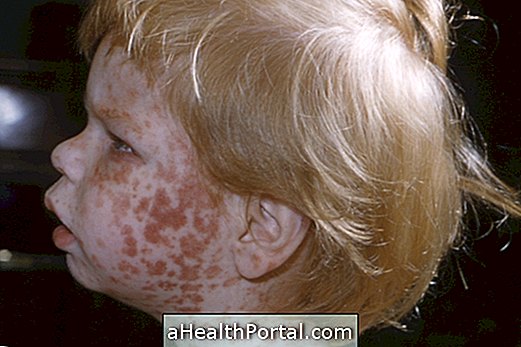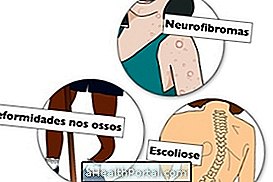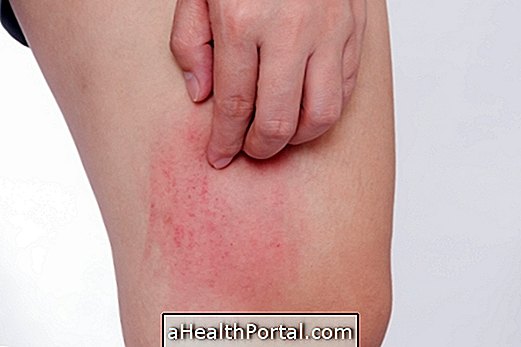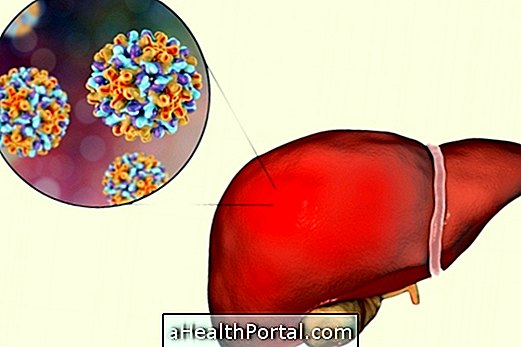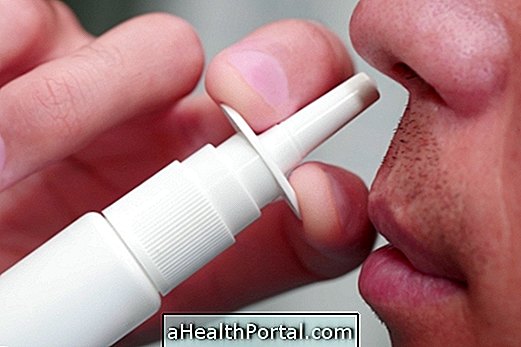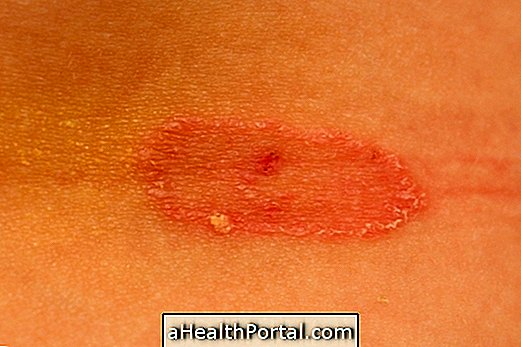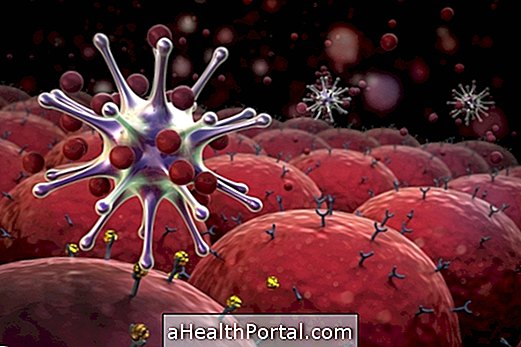Sore throat, bright red spots on the skin, fever, reddish face and red and inflamed raspberry-like tongue are some of the main symptoms caused by scarlet fever, an infectious disease caused by bacteria.
This disease especially affects children up to 15 years of age, and usually appears 2 to 5 days after symptoms of infection and inflammation appear in the throat.

Main Symptoms of Scarlet
Some of the main symptoms of scarlet fever include:
- Throat pain and infection;
- High fever;
- Itchy skin;
- Emergence of bright red spots or spots on the skin, which usually appear first in the neck and trunk, then spreading to the face, arms and legs;
- Reddish face and mouth;
- Tongue red and inflamed with raspberry-like appearance;
- Nausea and vomiting;
- Headache;
- Swelling in feet, legs and hands;
- General malaise.

In most cases, after starting treatment, symptoms begin to subside after 24 hours, and at the end of 6 days of treatment the red patches on the skin disappear and the skin flakes.
Treating and Relieving Symptoms
Scarlet fever treatment is done with antibiotics such as Azithromycin, Erythromycin, Penicillin or Amoxicillin, for example, which eliminate the bacterium Streptococcus Beta Hemolytic from group A responsible for causing this disease, this usually lasts between 7 to 10 days.
In addition to the use of antibiotics to cure the disease, other care is also recommended to help relieve the symptoms, such as:
- Eat pasty, soft or liquid foods such as cooked fruits, soups, purees, porridges, scrambled eggs, yogurts, jellies or mashed potatoes for example, which are easy to swallow and do not worsen sore throat;
- Add garlic to meals whenever possible as it is a food with anti-inflammatory properties;
- Regularly sprinkle Milk, Chamomile or Eucalyptus tea on the skin to refresh and relieve itching and discomfort;
- Spray oils or moisturizing creams to moisturize, reduce redness and prevent skin peeling;
- Take pomegranate or clove tea that help treat sore throats as they have antibiotic and anti-inflammatory properties;
- Take ginger tea to relieve nausea and vomiting;
- Add propolis stratum to water or tea as it helps treat pain and throat;
- Put cold compresses or a wet towel with cold water on the forehead and armpits to help lower the fever;
- Take Chamomile tea or chopped bulb leaves to relieve pain and headache.

Scarlet fever is a highly infectious disease and so it is very important that the baby or child does not go to school, that they get enough rest and avoid contact with other children or adults. See how you should take care of your baby or child with Scarlet fever in Know when Scarlet fever may be.
Scarring Diagnosis
The diagnosis of Scarlet fever can be made by the doctor through a physical examination where the symptoms are observed and Escalatine is suspected if the baby or child has a fever, sore throat, red spots and blisters on the red or inflamed skin or tongue .
To confirm suspected scarlet fever, the doctor will use a rapid lab kit to make a test that detects Streptococcus infections in the throat or may collect a saliva sample for laboratory analysis. In addition, another way to diagnose this disease is to ask for a blood test to evaluate the levels of white blood cells in the blood, which if elevated indicate the presence of an infection in the body.


